|
|
| |
USA
GRAND CANYON
Grand Canyon National Park is one of the United States' oldest national parks and is located in Arizona. Within the park lies the Grand Canyon, a gorge of the Colorado River, considered to be one of the major natural wonders of the world. The park covers 1,902 mi² (4927 km²) of unincorporated area in Coconino County and Mohave County.
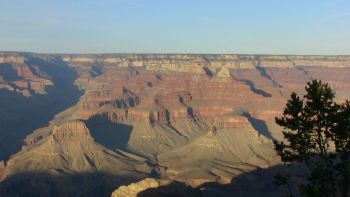 Grand Canyon
Photo PKG
Most visitors to the park come to the South Rim, arriving on Arizona State Route 64. The Highway enters the park through the South Entrance, near Tusayan, Arizona, and heads eastward, leaving the park through the East Entrance. All park accommodations are operated by the Xanterra corporation. Park headquarters are at Grand Canyon Village, a short distance from the South Entrance, being also the center of the most popular viewpoints.
Some thirty miles of the South Rim are accessible by road. A much smaller venue for tourists is found on the North Rim, accessed by Arizona State Route 67. There is no road connection between the two within Arizona except via the Navajo Bridge, near Page, Arizona, entailing a five-hour drive. Otherwise, the two rims of the Canyon are connected via Las Vegas, Nevada, and the Hoover Dam.
The rest of the Grand Canyon is extremely rugged and remote, although many places are accessible by pack trail and backcountry roads.
The area around the Grand Canyon became a national monument on January 11, 1908, and was designated national park on February 26, 1919. The creation of the park was an early success of the environmental conservation movement; its National Park status may have helped thwart proposals to dam the Colorado River within its boundaries. (Lack of this fame may have enabled Glen Canyon Dam to be built upriver, flooding Glen Canyon and creating Lake Powell.) UNESCO has declared it as a World Heritage Site.
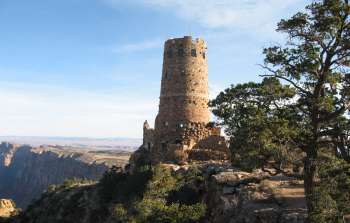 Grand Canyon Desert View Watchtower
Photo EBGThe Grand Canyon itself, including its extensive system of tributary canyons, is valued for the combination of large size, depth, and the exposed layering of colorful rocks dating back to Precambrian times. It was created through the incision of the Colorado River and its tributaries after the Colorado Plateau was uplifted and the Colorado River system developed along its present path.
| |
|
National Holidays
New Year's Day
January 1 every year
New Year's Day is the first day of the year. It is a public holiday, often celebrated with fireworks at the stroke of midnight as the new year starts.
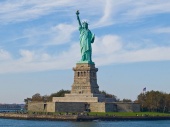 Statue of Liberty
Photo: William Warby
Martin Luther King Day
3rd Monday in January
Martin Luther King Jr. Day is a United States Federal holiday marking the birthdate of Rev. Dr. Martin Luther King, Jr.. It is observed on the third Monday of January each year, which is around the time of King's birthday, January 15. King was the chief spokesman for nonviolent activism in the civil rights movement, which successfully protested racial discrimination in federal and state law. He was assassinated in 1968.
Washington's Birthday
3rd Monday in February
Washington's Birthday is a United States federal holiday celebrated on the third Monday of February. It is also commonly known as Presidents Day (or Presidents' Day). As Washington's Birthday or Presidents Day, it is also the official name of a concurrent state holiday celebrated on the same day in a number of states.
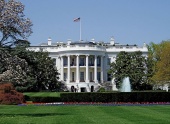 The White House
Photo: upstateNYer
Memorial Day
Last Monday in May
Formerly known as Decoration Day, it commemorates U.S. men and women who died while in the military service.[1] First enacted to honor Union soldiers of the American Civil War (it is celebrated near the day of reunification after the Civil War), it was expanded after World War I.
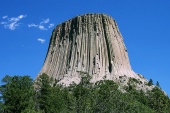 Devils Tower National Monument
Independence Day
July 4th every year
Independence Day, commonly known as the Fourth of July, is a federal holiday commemorating the adoption of the Declaration of Independence on July 4, 1776, declaring independence from the Kingdom of Great Britain. Independence Day is commonly associated with fireworks, parades, barbecues, carnivals, fairs, picnics, concerts, baseball games, political speeches and ceremonies, and various other public and private events celebrating the history, government, and traditions of the United States. Independence Day is the national day of the United States
Labour Day
1st Monday in September
Traditionally, Labor Day is celebrated by most Americans as the symbolic end of the summer. The holiday is often regarded as a day of rest and parades. Speeches or political demonstrations are more low-key than May 1. Forms of celebration include picnics, barbecues, fireworks displays
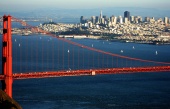 San Fransisco
Columbus Day
2nd Monday in October
Columbus Day first became an official state holiday in Colorado in 1906, and became a federal holiday in 1934. However, people have celebrated Columbus' voyage since the colonial period. In 1792, New York City and other U.S. cities celebrated the 300th anniversary of his landing in the New World. In 1892, President Benjamin Harrison called upon the people of the United States to celebrate Columbus Day on the 400th anniversary of the event. During the 400-year anniversary in 1892, teachers, preachers, poets and politicians used Columbus Day rituals to teach ideals of patriotism.
Veterans' Day
November 11 every year
The largest summer festival in Hamburg is the Alster-Vergnügen, which takes place from August 30 through September 2, 2002. Featuring everything from street theatre to music and art on the waterfront in Hamburg, the ‘Venice of the North’ is a magnificent host for this upbeat, exciting festival.
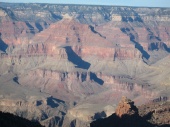 Grand Canyon
Photo:
EBG
Thanksgiving Day
4th thursday in November
Thanksgiving or Thanksgiving Day, presently celebrated on the fourth Thursday in November, has been an annual tradition in the United States since 1863. Thanksgiving was historically a religious observation to give thanks to God.
 Hollywood Los Angeles
Christmas Day
December 25 every year
|
|
|